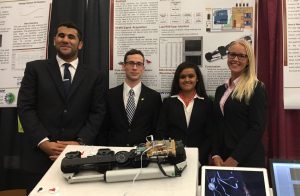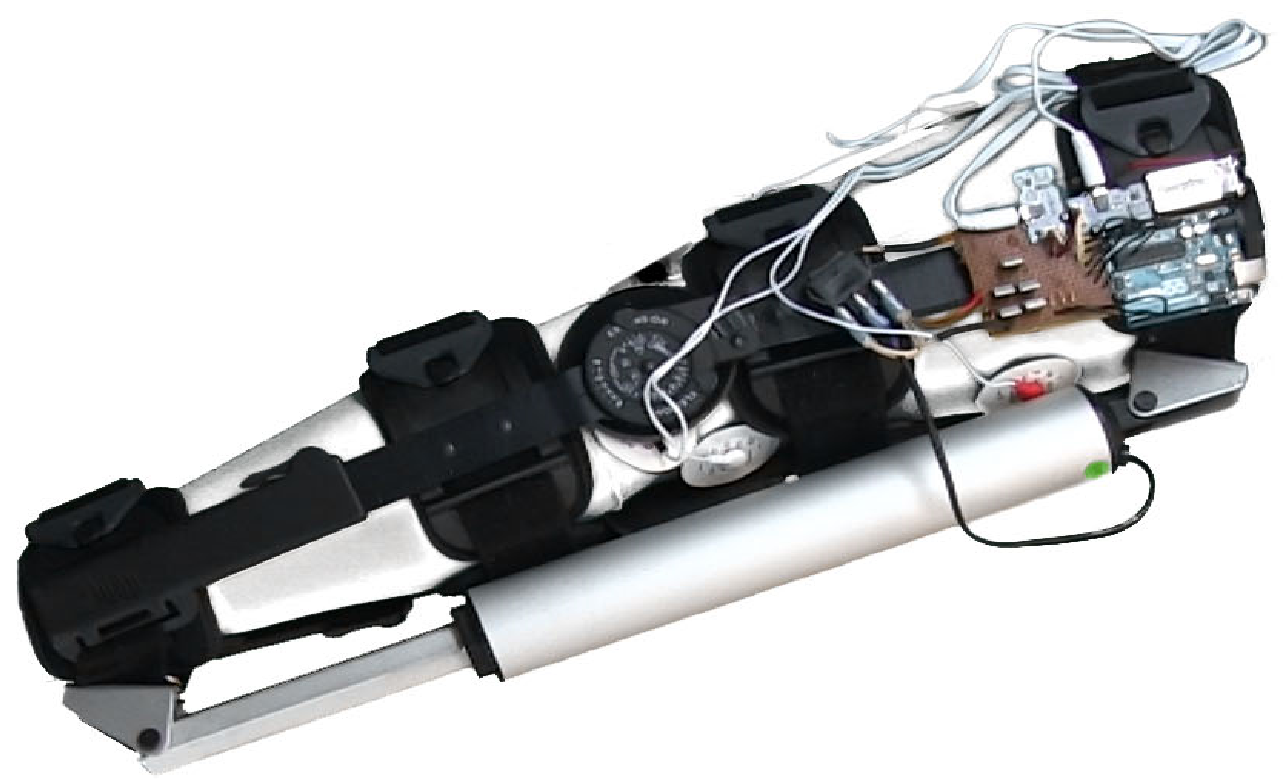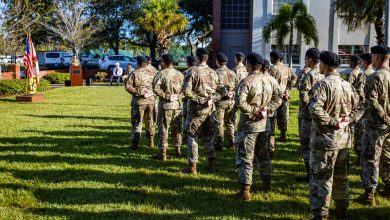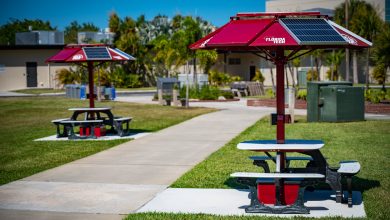Biomedically Engineered Knee Brace Innovates Physical Therapy
Biomedical engineering undergraduate student Jessica Vidmark and her team designed a knee brace that provides an innovative approach to traditional physical therapy.
The Light Exoskeleton Gear (L.E.G.) is an enhanced knee brace designed for rehabilitative use. The L.E.G. uses surface electromyography sensors to measure the user’s muscle activity, which controls a linear actuator that either assists the user’s action to improve their range of motion or resists it to help gain muscle strength.
The L.E.G. moves the rehabilitation process from the doctor’s office or physical therapist to the user’s home. It mimics rehabilitative help physical therapists provide, such as the resistive technique for improved muscle strength.
 The unique thing about the L.E.G. is it takes into consideration the importance of the communication between the doctor and patient. The L.E.G. gives the patient the option to send the muscle activity data via Bluetooth to a user interface for graphical analysis. It also stores the data in a personal user log, so a doctor or physical therapist can easily track their patient’s rehabilitative exercises and progress.
The unique thing about the L.E.G. is it takes into consideration the importance of the communication between the doctor and patient. The L.E.G. gives the patient the option to send the muscle activity data via Bluetooth to a user interface for graphical analysis. It also stores the data in a personal user log, so a doctor or physical therapist can easily track their patient’s rehabilitative exercises and progress.
“The boom in biomedical engineering the past couple of years has really fascinated us, so we decided to design a device that could assist people suffering from injuries that hindered them in their daily lives,” Vidmark said. “Eventually we narrowed it down to the knee, which is a common area of concern for many people.”
 Vidmark believes her project was the most realistic project her teammates have worked on. Their student design project allowed them to apply a lot of the theoretical knowledge they had only used in simulations and on paper before bringing their design to life. In addition, the project also taught the team things they had never learned in class.
Vidmark believes her project was the most realistic project her teammates have worked on. Their student design project allowed them to apply a lot of the theoretical knowledge they had only used in simulations and on paper before bringing their design to life. In addition, the project also taught the team things they had never learned in class.
“It was a great experience in teamwork,” Vidmark said. “I think senior design was a lot like a lot of the projects I will be working on in my career.”
Vidmark advises students to embrace change. While the final project may not look exactly like what students first planned, it will probably turn out better. She also suggests students be early for deadlines and plan way in advance.
“Being a part of Team L.E.G. has given me new hope about group projects,” Vidmark said. “We all have a year full of stressful, difficult, fun, frustrating and great memories to take away from this experience, and I believe we have all grown a lot as people thanks to student design.”





